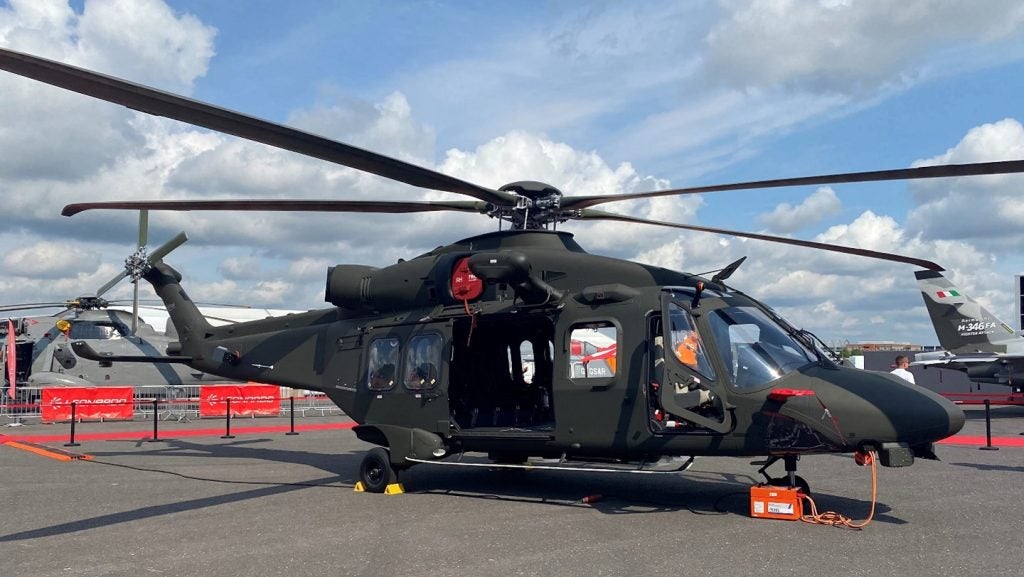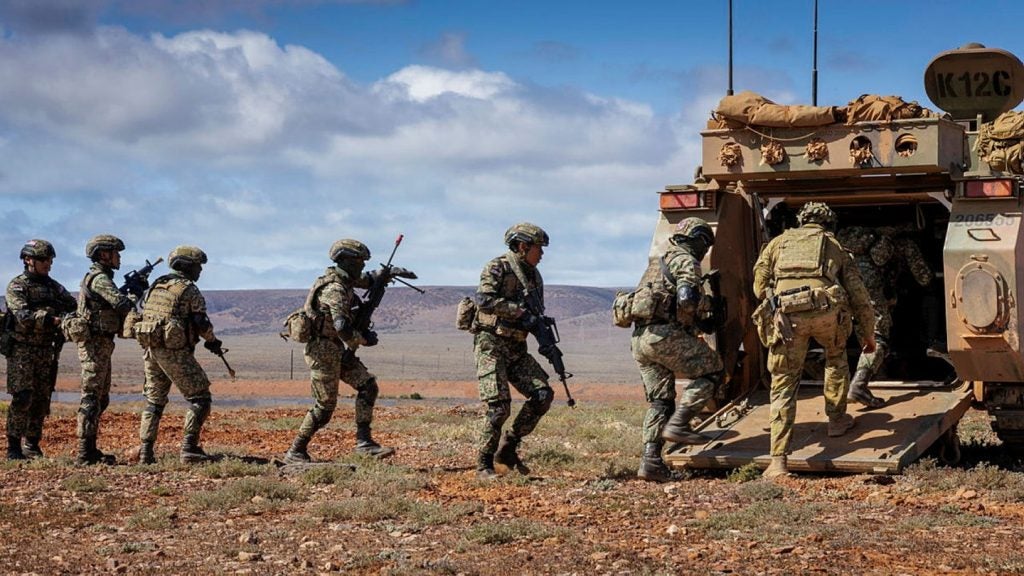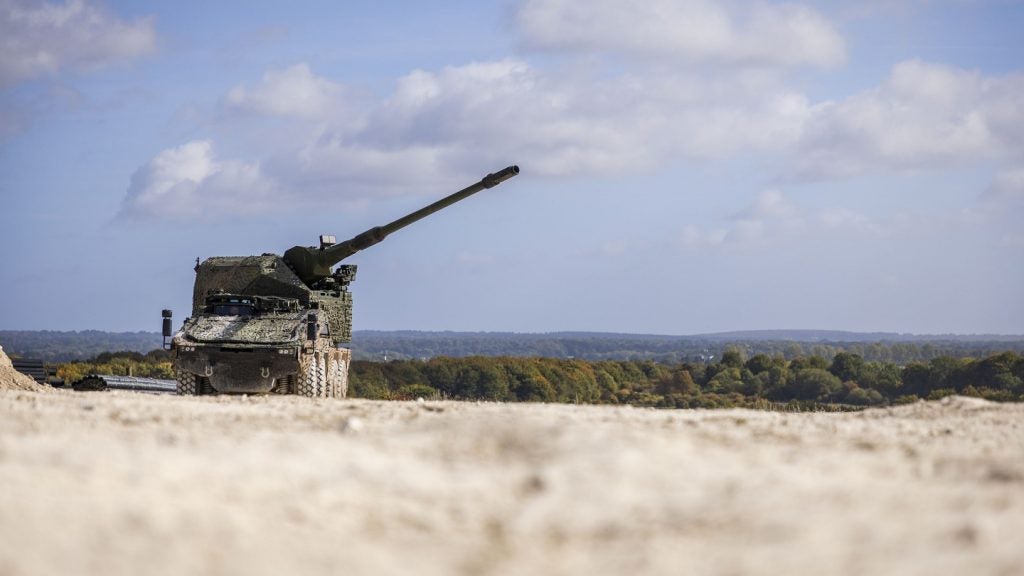Military protective clothing defends armed service personnel from a host of threats. Such threats include blunt force trauma, ballistic and blast-related effects, as well as chemical, biological, radiological, nuclear, and high-yield explosive (CBRNE) hazards.
Armed forces require high-performance protective clothing and CBRNE equipment to ensure soldier safety and preserve combat effectiveness.
Leading military protective clothing and CBRNE protection systems and solutions
Our team at Army Technology has researched and listed some of the leading designers and manufacturers of military wearables.
These include those involved in the production and sale of chemical, biological, radiological and nuclear (CBRN) protection equipment based on its intel, insights and decades-long experience in the sector.
Our valuable information about military protective clothing information includes list of suppliers of a wide range of protective military clothing.
See Also:
This includes equipment such as protective suits, helmets, goggles, gloves, boots, and decontamination and first-aid kits, as well as collective protection systems such as tents, containers, special-purpose vehicles and CBRNE detection equipment for military applications.
Our industry information also includes military protective clothing suppliers of innovative fabrics, materials and technologies for clothing and devices used by armed forces personnel for protection against harsh operating environments and CBRN agents.
Within our download document, buyers will find a range of useful information for military mission planners, strategists, army commanders, senior procurement executives, military environmental health and safety officers, and any other individual involved in the procurement and usage of protective wearables and CBRN defence solutions.
The download contains detailed information on military PPE and CBRN protection equipment suppliers and their product lines, alongside contact details to aid your purchasing decision.
Military protective clothing, PPE, and CBRNE solutions
Defence and homeland security forces use different special-purpose PPE and CBRNE protection systems designed to help avoid harm, and to contain hazardous materials.
Some of the most effective types of protective equipment and systems used in military applications include, but are not limited to:
- Ballistic-resistant and blast-protective body armour
- High-impact protective suits, helmets, gloves and boots
- Military goggles, eye shields and sunglasses
- Chemical protective, firefighter and explosive ordinance disposal suits
- CBRN protective gas masks and hoods
- Bomb suppression blankets
- Waterproof and fire-retardant tents and mosquito nets
- Armour plates and bullet-resistant glass for military vehicles
- Chemical detectors and dosimeters
- CBRN detection systems for defence vehicles
- Decontamination systems for personnel and casualty operations, and
- Rapidly deployable laboratories for detecting and identifying chemical and biological warfare agents
Military protective clothing industry market trends
With an increasing number of terror attacks around the world, the need for a growing preparedness is of paramount importance.
Military protective clothing is being designed to tackle chemical, biological and nuclear warfare. With this, the increasing defence expenditures by countries for developing and procuring advanced CBRN protection systems are fuelling the demand for CBRN defence equipment.
As one would imagine, Armed forces around the world are seeking to protect their soldiers against any kind of CBRN agents.
They are also looking to ensure their ability to conduct operations even in the case of pandemics, industrial disasters, or the use of weapons of mass destruction (WMD) by state or non-state adversaries.
FAQs
1. What is CBRNE protective clothing and why is it important?
CBRNE protective clothing is designed to safeguard military personnel and first responders from hazardous environments that involve chemical, biological, radiological, nuclear, and explosive threats.
The suits are typically constructed from specialised materials that provide a barrier against harmful agents, ensuring that wearers can perform their duties safely in high-risk situations.
These protective garments are crucial in both combat zones and domestic emergency response scenarios, where exposure to toxic substances or radiation can lead to severe health complications or death.
2. What are the key components of a CBRNE protection suit?
A comprehensive CBRNE protection suit typically includes several vital elements: a full-body suit made from protective fabric, a respirator or gas mask to filter airborne toxins, gloves, and boots.
Some advanced suits also incorporate integrated communication systems, body armour, and cooling systems to manage the wearer’s body temperature during extended use.
These components work together to provide full-spectrum protection against a range of hazardous substances.
3. What innovations are improving modern CBRNE protective equipment?
Recent advancements in materials science and technology have led to the development of more lightweight, durable, and flexible CBRNE protective suits.
Innovations such as nanotechnology-based materials, self-decontaminating fabrics, and breathable textiles allow for greater mobility and comfort while maintaining high levels of protection.
Additionally, smart sensors embedded in suits can now monitor the environment and alert the wearer to the presence of dangerous substances, making these suits more effective in real-time threat detection.
4. How are CBRNE protective suits tested for effectiveness?
CBRNE protective suits undergo rigorous testing to ensure they meet the necessary safety standards.
These tests evaluate the suit’s resistance to various agents, including toxic chemicals and biological pathogens, as well as its durability under different environmental conditions.
Testing also includes assessing the suit’s ability to maintain a seal and protect against contamination while allowing for mobility and comfort during prolonged use in hazardous environments.
5. What role do CBRNE suits play in military and emergency response scenarios?
In military operations, CBRNE suits are essential for protecting personnel from chemical and biological warfare agents, as well as radiological threats from nuclear devices.
They are also critical in peacekeeping and humanitarian missions where soldiers may be exposed to hazardous materials. In civilian emergency response, these suits are used by hazmat teams, firefighters, and medical responders during industrial accidents, terrorist attacks, or natural disasters involving toxic substances.
Their deployment ensures that responders can operate safely in contaminated environments while preventing the spread of hazardous materials.






